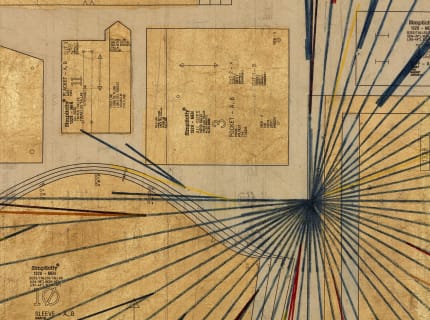Ronny Quevedo is included in the group exhibition Verde-Distância at the 2nd Bienal das Amazônas, Belém, Brazil, on view from August 29-November 30, 2025.
The Bienal das Amazônas's press release follows:
The Amazon Biennial released this Thursday (29) the long-awaited list of artists participating in its second edition, which will take place from August 29 to November 30, 2025, in Belém (PA). The selection of the 74 artists and collectives from the Pan-Amazon and the Caribbean was carried out by chief curator Manuela Moscoso, in collaboration with Sara Garzón , deputy curator of this edition, and Jean da Silva , co-curator of the public program. The works dialogue with the concept of “Green-distance”, inspired by the novel Verde Vagomundo, by the writer from Pará, Benedicto Monteiro.
After addressing the imaginary of water with the theme "Bubuia: Waters as a Source of Imagination and Desire" in its inaugural 2023 edition, the Amazon Biennial reaffirms its role as a space for encounters and listening between Amazonian territories, now connecting with the Caribbean. This time, the curatorial proposal evokes the dreams and displacements of Benedicto Monteiro's "vagomundo," revealing the Amazon as a continuous flow of voices, rhythms, affections, and resistance.
Published in 1972, Verde Vagomundo reconstructs the story of a people shaped by greenery and isolation, by distances, passions, and absences. The city of Alenquer, in western Pará—the setting for the novel—is traversed by water, faith, and natural cycles that determine the time and lives of its inhabitants.
The curatorship of the 2nd Amazon Biennial draws on this exploration of the territory to celebrate the cultural diversity of the Pan-Amazon region and deepen the commitment to the decentralization of artistic practices. "Traveling through the Pan-Amazonian territories means immersing oneself in profoundly distinct contexts, yet simultaneously connected by water flows, memories, and knowledge," says Manuela Moscoso, who traveled along several rivers and riverbanks in the region in search of the works and narratives that comprise the exhibition.
According to the curator, direct contact with the artists and their contexts of production is essentual, as creation doesn't happen "in a vacuum," but responds to the material, social, politcal, and ecological conditions of the place. "Each experience was intense. I was able to learn about experiemental processes on ways of inhabiting the world, the preservation of memory, and transdisciplinary practices in cinema, as well as investigations that address territorial exploration and indignenous cosmologies. More than simply seeing the works, the key was to spark conversations, listen to the artists, and understand how their research engages with the urgent needs of our time," the curator noted.

